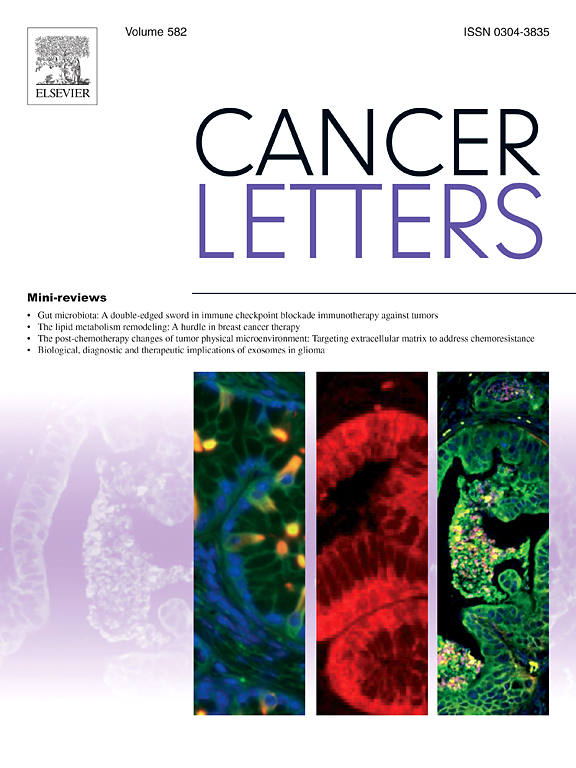Phase 3 randomized study of physician choice vs metronomic chemotherapy in platinum refractory/ineligible head and neck cancer in palliative setting with survival outcomes
IF 9.1
1区 医学
Q1 ONCOLOGY
引用次数: 0
Abstract
There are multiple options of treatment in second line therapy for locally advanced head and neck squamous cell carcinoma (LAHNSCC) treated with palliative intent. However, triple metronomic chemotherapy is oral, cost-effective, and resource-efficient. Hence this phase 3 randomized trial compares National Comprehensive Cancer Network (NCCN) recommended physician choice therapy versus triple metronomic chemotherapy (TMC) in the second-line treatment of head and neck cancer This study, designed to establish superiority, was conducted in India across 16 sites under the Cancer Research Statistics Foundation. The study recruited 114 LAHNSCC who were treated with palliative intent in second line. These patients underwent 1:1 central stratified randomization to either triple metronomic chemotherapy or physician choice therapy (taxane, 5fu/capecitabine, afatinib, nivolumab/pembrolizumab, cetuximab).At a median follow-up of 258 (95 % CI 209–306) days, the median overall survival of the triple metronomic chemotherapy was 181 days (95 %CI 142.7–219.2) versus 123 days (95 %CI 94–152) in the physician choice therapy arm (P = 0.00.002). The median progression free survival was 120 days (95 %CI 89.2–150.8) versus 70 days (95 % CI 58.2–81.8) in metronomic chemotherapy and in the physician choice therapy arms respectively (P < 0.001).These results suggest that TMC significantly improves survival outcomes over physician choice therapy in platinum-refractory head and neck cancer.
在姑息环境下,医生选择与节律化疗对铂难治/不符合条件的头颈癌的生存结果的3期随机研究
以姑息治疗为目的的局部晚期头颈部鳞状细胞癌(LAHNSCC)的二线治疗有多种治疗选择。然而,三次节拍化疗是口服的,具有成本效益和资源效率。因此,这项3期随机试验比较了国家综合癌症网络(NCCN)推荐的医生选择疗法与三次节拍化疗(TMC)在头颈癌二线治疗中的优势。这项研究旨在确定优势,在癌症研究统计基金会的资助下在印度的16个地点进行。该研究招募了114名LAHNSCC患者,他们在二线接受了姑息治疗。这些患者接受了1:1的中心分层随机分组,接受三节拍化疗或医生选择的治疗(紫杉烷、5fu/卡培他滨、阿法替尼、纳武单抗/派姆单抗、西妥昔单抗)。在中位随访258天(95% CI 209-306)时,三次节拍化疗的中位总生存期为181天(95% CI 142.7-219.2),而医生选择治疗组的中位总生存期为123天(95% CI 94-152) (P = 0.00.002)。节律化疗组和医师选择治疗组的中位无进展生存期分别为120天(95% CI 89.2-150.8)和70天(95% CI 58.2-81.8) (P <;0.001)。这些结果表明,在铂难治性头颈癌中,TMC比医生选择的治疗方法显著提高了生存结果。
本文章由计算机程序翻译,如有差异,请以英文原文为准。
求助全文
约1分钟内获得全文
求助全文
来源期刊

Cancer letters
医学-肿瘤学
CiteScore
17.70
自引率
2.10%
发文量
427
审稿时长
15 days
期刊介绍:
Cancer Letters is a reputable international journal that serves as a platform for significant and original contributions in cancer research. The journal welcomes both full-length articles and Mini Reviews in the wide-ranging field of basic and translational oncology. Furthermore, it frequently presents Special Issues that shed light on current and topical areas in cancer research.
Cancer Letters is highly interested in various fundamental aspects that can cater to a diverse readership. These areas include the molecular genetics and cell biology of cancer, radiation biology, molecular pathology, hormones and cancer, viral oncology, metastasis, and chemoprevention. The journal actively focuses on experimental therapeutics, particularly the advancement of targeted therapies for personalized cancer medicine, such as metronomic chemotherapy.
By publishing groundbreaking research and promoting advancements in cancer treatments, Cancer Letters aims to actively contribute to the fight against cancer and the improvement of patient outcomes.
 求助内容:
求助内容: 应助结果提醒方式:
应助结果提醒方式:


